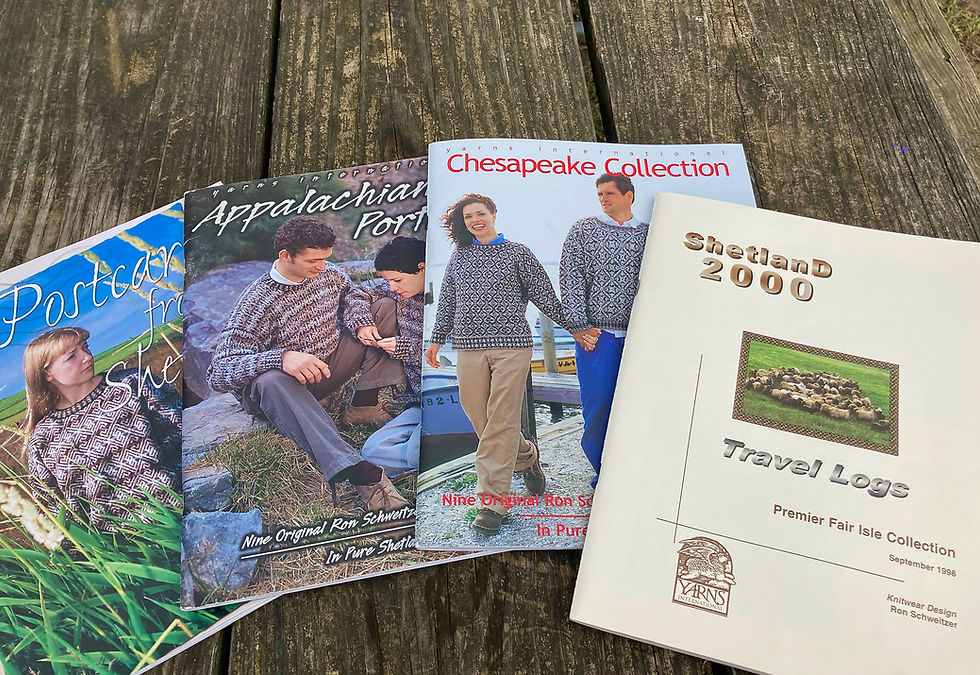The SheepSaver Project: Part Three, Patterns and Place
- norahowley
- Oct 27, 2021
- 2 min read

Patterns
As an experienced businessperson, Betty Lindsay knew that this lovely new yarn would not sell itself. Betty believed that it was not enough to merely transplant the patterns that Shetland knitters were doing with dyed yarns to the five undyed shades that made up the original line.
Betty did not want to merely transplant patterns that Shetland knitters were doing with commercially dyed yarns to the five undyed shades that made up the original line. Instead she sought to create a whole new set of patterns that would show the wool off, and show knitters, particularly American knitters, what was possible with this wool. To do this she turned to one of her customers, Ronald (Ron) Schweitzer, who had been knitting the Alice Starmore models for the shop.
As Ron described it, he and Betty met over lunch and she asked him if he could come , up with some designs. He went away and sketched, they met, and he sketched some more and by the fall of 1998 the first set of patterns was released as Travel Logs (You can see four of the patterns from this collection on Ravelry if it is accessible to you). They were unlike anything available at the time and according to Ron got a glowing review from Interweave Knits. This collaboration would eventually lead to the creation of more than 95 patterns which were sold as part of a kit with the wool. No yarn substitutions here.
Place
These patterns all drew on the tradition of the Shetland all-over, and thematically were based on the idea of patterns that reflect or invoke a particular place. In the case of the first collection, Travel Logs, Ron Schweitzer wrote, “My knitters curiosity conjured an unmapped journey that led me into new ways of thinking about Fair Isle patterns and garment construction: particularly the treatment of border patterns and the design of allover, vertical and horizontal patterns using the interconnected relationships of natural colors” (1998).
Subsequent collections were The Chesapeake Collection (1999), Appalachian Portraits (2000, and Postcards from Shetland (2003). These three were knit in Shetland, with photographs for the first two were taken on location in the United States and the latter taken in Shetland. (Ravelry links for each of these:The Chesapeake Collection, Appalachian Portraits, Postcards from Shetland)
With the Appalachian Portraits collection four additional colors were added to the Shetland 2000 line. This took the line to the nine colors we now find in the Shetland Supreme Jumper Weight. Postcards from Shetland saw the addition of dyed colors with yarn that had been dyed with plant dyes by the late Luisa Gelenter and the staff of LaLana Wools.
Place continued to be a powerful force for the design ethos of the Shetland 2000 team. Future posts will return to this theme.
Coming next
I am preparing to knit




Comments